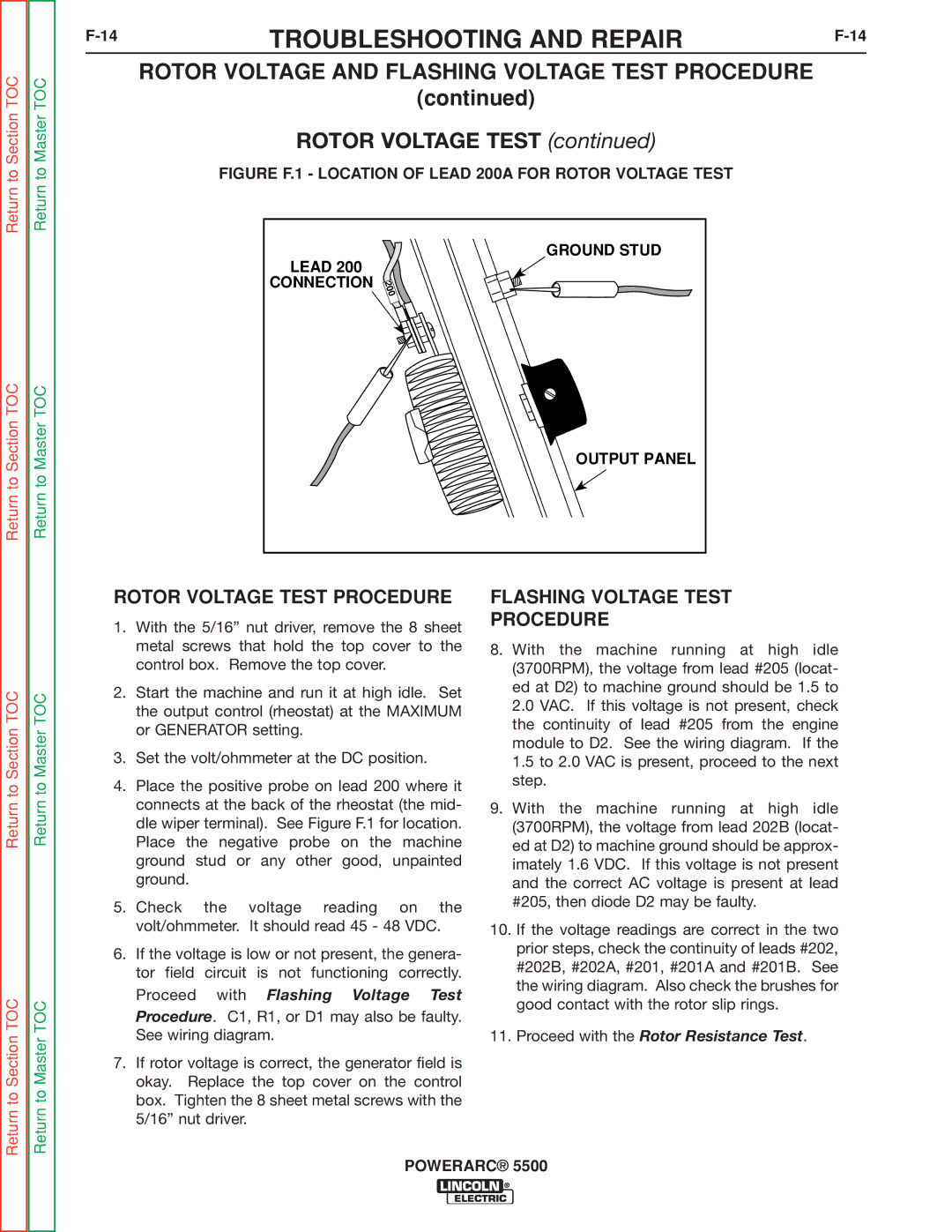
Return to Section TOC
Return to Section TOC
Return to Master TOC
Return to Master TOC
F-14 TROUBLESHOOTING AND REPAIRF-14
ROTOR VOLTAGE AND FLASHING VOLTAGE TEST PROCEDURE
(continued)
ROTOR VOLTAGE TEST (continued)
FIGURE F.1 - LOCATION OF LEAD 200A FOR ROTOR VOLTAGE TEST
GROUND STUD
LEAD 200
CONNECTION
OUTPUT PANEL
Return to Section TOC
Return to Section TOC
Return to Master TOC
Return to Master TOC
ROTOR VOLTAGE TEST PROCEDURE
1.With the 5/16” nut driver, remove the 8 sheet metal screws that hold the top cover to the control box. Remove the top cover.
2.Start the machine and run it at high idle. Set the output control (rheostat) at the MAXIMUM or GENERATOR setting.
3.Set the volt/ohmmeter at the DC position.
4.Place the positive probe on lead 200 where it connects at the back of the rheostat (the mid- dle wiper terminal). See Figure F.1 for location. Place the negative probe on the machine ground stud or any other good, unpainted ground.
5.Check the voltage reading on the volt/ohmmeter. It should read 45 - 48 VDC.
6.If the voltage is low or not present, the genera- tor field circuit is not functioning correctly. Proceed with Flashing Voltage Test Procedure. C1, R1, or D1 may also be faulty. See wiring diagram.
7.If rotor voltage is correct, the generator field is okay. Replace the top cover on the control box. Tighten the 8 sheet metal screws with the 5/16” nut driver.
FLASHING VOLTAGE TEST
PROCEDURE
8.With the machine running at high idle (3700RPM), the voltage from lead #205 (locat- ed at D2) to machine ground should be 1.5 to
2.0VAC. If this voltage is not present, check the continuity of lead #205 from the engine module to D2. See the wiring diagram. If the
1.5to 2.0 VAC is present, proceed to the next step.
9.With the machine running at high idle (3700RPM), the voltage from lead 202B (locat- ed at D2) to machine ground should be approx- imately 1.6 VDC. If this voltage is not present and the correct AC voltage is present at lead #205, then diode D2 may be faulty.
10.If the voltage readings are correct in the two prior steps, check the continuity of leads #202, #202B, #202A, #201, #201A and #201B. See the wiring diagram. Also check the brushes for good contact with the rotor slip rings.
11.Proceed with the Rotor Resistance Test.
